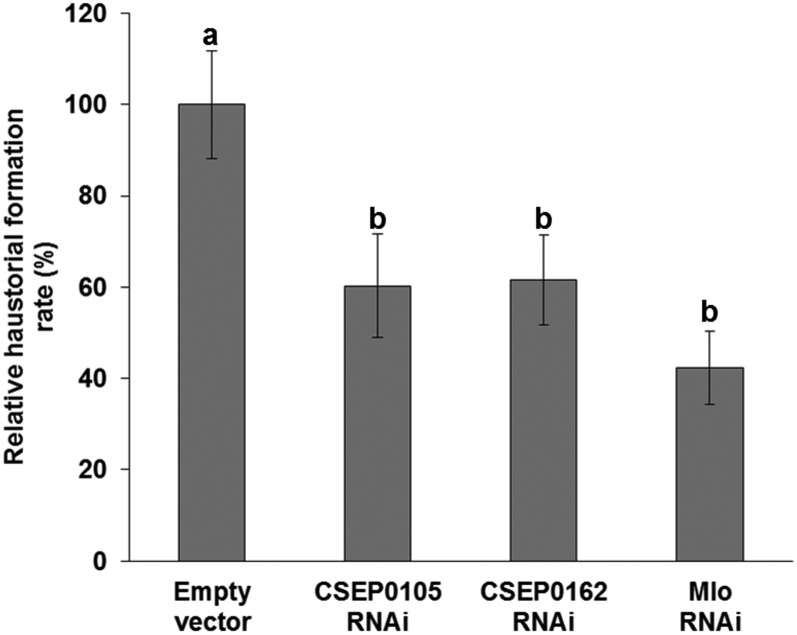Figure 1.
Silencing of CSEP0105 and CSEP0162 by HIGS reduces the Bgh haustorial formation rate. One-week-old barley leaves were bombarded with an RNAi construct and a GUS reporter construct. Two days later, leaves were infected with Bgh, and at 3 dpi, they were stained with a 5-bromo-4-chloro-3-indoxyl-β-d-glucuronic acid, cyclohexylammonium salt solution and scored for fungal haustorial formation rate, which was calculated as the number of GUS-expressing cells with haustoria divided by the total number of GUS-expressing cells. The relative haustorial formation rate of each construct was obtained by comparing with the empty vector control of each experiment, which was set to 100%. Data represent means ± se of five independent experiments, except for Mlo RNAi (n = 3). A total of 1,821, 2,102, 1,779, and 617 cells were assessed for the empty vector, CSEP0105, CSEP0162, and Mlo RNAi, respectively. Bars marked with different letters are significantly different at P < 0.01.

